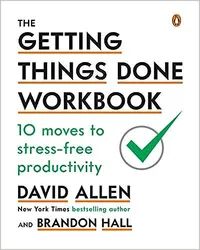Why you should try the ‘hunter' method for tackling household chores
To-do lists simply not getting done? The 'hunter' method could help check off the worst of your cleaning and organizing tasks experts say


To-do lists are a great way to break down each of the tasks you need to get done throughout the day, but they make it simple to pick out the easiest tasks and keep pushing the tricky ones down. In the end, they never get done.
This is where the 'hunter' method comes in – a simple yet effective productivity tip that experts are hailing as the only thing to break the never-ending to-do list cycle.
Below, experts have explained what the 'hunter' method is, and how you can use it to tackle your chore list.
The 'hunter' method
This productivity trick derives itself from our ancestors – the hunter-gatherers. Although they were not cleaning the bathroom or organizing an entryway, they had to get a series of tasks done such as hunting for food in a day to ensure their survival.
Not cleaning the kitchen will not kill us by bedtime, of course, but the idea is that unless the biggest tasks get done, we are putting ourselves in a less advantageous position for the rest of the week.

Alex J Anderson-Kahl, EdS. of Healing Little Hearts, loves to use this trick as a school psychologist to ensure his job is done efficiently. He says: ‘Each day, I designate one BIG task that needs to be tackled. I write that down and put it somewhere I can see – such as sticking a Post-it note to my monitor.
'This approach aligns with the "hunter" method's emphasis on accomplishing the essential. For me, this task could be anything from preparing for a critical meeting to developing a new intervention strategy for a student. Despite the myriad of tasks that might arise in a day, as long as that one pivotal task is completed, I can close the day feeling accomplished.’
Design expertise in your inbox – from inspiring decorating ideas and beautiful celebrity homes to practical gardening advice and shopping round-ups.

Alex Anderson-Kahl, is a nationally certified school psychologist with a passion that extends beyond traditional educational psychology. He has a deep-seated commitment to enhancing the emotional, psychological, and educational well-being of children, especially those facing unique challenges.
It is not just the sense of urgency that makes this an effective approach for doing housework or life admin, however, Alex continues. ‘Tackling the most pressing task first, or the "Eat That Frog" strategy, aligns with cognitive psychology principles. When we complete a significant task, it triggers a release of dopamine, a neurotransmitter linked to pleasure, motivation, and reward. This not only provides an immediate sense of achievement but also fuels motivation for subsequent tasks.’
This makes the 'hunter' method a great tip for decluttering or cleaning if you find getting started on tasks the most difficult bit about household chores. Completing at least one 'hunter' task a day will help you to build healthier habits over time.
The Getting Things Done Workbook | $13.95 at Amazon
Getting Thing's Done is one of the most popular productivity workbooks on the market, with thousands of coaches and trainers around the world swearing by the method to increase productivity and reduce stress simultaneously.
That being said, the 'hunter' method is best applied in conjunction with a few other productivity tricks if you want to get everything done in under a month, reminds Kaitlin Cuevas, founder of Think Happy and podcast host.
‘I believe it would be best used as one of the multiple tools in someone's "productivity tool kit". For example, someone's tool kit could include task batching, power hours, and also the "hunter" method.’
It can also help to sit down and work out why you are avoiding certain tasks on your traditional to-do list, she adds. ‘As humans, it's in our nature to move toward pleasing, comfortable things (in this instance, easy or quick win tasks) and to move away from difficult, uncomfortable things (again in this instance, more difficult, longer, new-to-you tasks),’ Kaitlin explains. ‘Work out what makes you uncomfortable about the task – are you avoiding decluttering when overwhelmed, for instance? Try to find ways to help defeat this mindset.’

Kaitlin Cuevas created the Think Happy Co. blog and podcast to teach other women how to reduce daily stress, decrease unproductive time, and increase the amount of time they have to pour into themselves for happy families.
FAQs
Why am I not able to do housework?
If you can never seem to get housework done, then it may be that you do not have a good strategy for approaching the tasks at hand. If you don't have a written to-do list to help you visualize tasks, then start there. If you do, try breaking the list down into sections – whether that is by room, type of task (cleaning, decluttering, tidying, etc.), or how long they will take to do.
Then, set a timer for 30-60 minutes, and try to tackle one section within that time. If the timer goes off, stop what you are doing and return to work another day. This will help to build positive associations with chores and take some of the stress away.
What is the 11 am technique?
The 11 am technique is an approach to work and chores where you convince yourself that your work day ends at 11 am, and every major task needs to be completed by then. This creates a sense of urgency that can help you to focus your mind and work more productively – and it goes hand in hand with the 'hunter' method too. After 11 am, you can then either stop your chores or if you are at work, relax a little knowing that the major daily tasks are out of the way.
The 'hunter' method may seem a little silly at first, comparing cleaning a house fast to fighting for survival, but this slight stressor or sense of urgency can help to kick-start your brain into action. When using this method, ensure you are not piling too much pressure on yourself, and remember that despite its namesake, the method is not really life-or-death.

Chiana has been at Homes & Gardens for two years and is our resident 'queen' of non-toxic living. She spends most of her time producing content for the Solved section of the website, helping readers get the most out of their homes through clever decluttering, cleaning, and tidying tips. She was named one of Fixr's top home improvement journalists in 2024.
